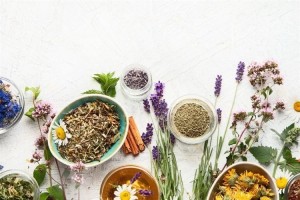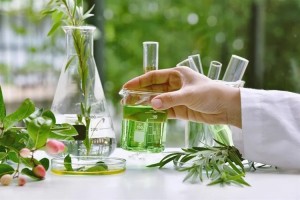Plants have been used as the source of drugs for long ages, and as of today, approximately 70,000 species have been screened for their potential utility as medicines. In recent decades, several antitumor drugs have been derived from plants, including paclitaxel (from Taxus brevifolia) and camptothecin, using fractionation techniques based on bioactivity.
At present, about 8 out of 10 drugs used to treat infection, cardiovascular disease, or cancers, or as immunosuppressives, come from plants, directly or as derivatives. Between 1981 and 2006, approval was granted to 155 antitumor drugs, of which almost half were derived from natural products.
Only about one in 10,000 screened compounds are eventually proved to be safe and effective by regulatory authorities. Even at late stages of clinical trials, approximately one in two drug leads fail to make the mark. There have been many examples of drugs that are released commercially, only to be pulled within weeks, months or years due to unacceptable side effects.
This high degree of uncertainty has led to a focus on plant-based chemicals for drug discovery, especially since these are seen as safe and more effective than synthetic chemicals.

Plant compounds
Plant polysaccharides have immunomodulatory or immunostimulatory effects, such as Ganoderma lucidum, Cordyceps sinensis and Açaí fruit. Flavonoids, found in almost all plants, are compounds with a heterocyclic ring structure consisting of an aromatic ring and a benzopyran ring with a phenyl substituent and include flavones, isoflavone, flavonols, flavonones, and xanthones. They have a range of bioactive properties.
Proteins from some herbs are used as natural protein supplements for convalescent patients. Morphine and aspirin are pure natural and semi-synthetic products derived from the opium poppy (Papaver somniferum), and from willow bark, respectively. They were rapidly followed by codeine, digitoxin, quinine and pilocarpine.
The more recent plant-based drugs include Artemisinin from Artemisia annua, used to treat multidrug-resistant malaria, and Silymarin (used in liver disease) from the seeds of Silybum marianum. Alkaloids isolated earlier are now finding reapplication as nitric oxide activators, helping prevent obesity and atherosclerosis.
Again, galantamine is an alkaloid extracted from Galanthus nivalis, used to treat Alzheimer’s disease; apomorphine is a semisynthetic morphine derivative used in Parkinson’s disease; and Tiotropium, an atropine derivative from Atropa belladonna is useful in chronic obstructive pulmonary disease. The cannabis plant (Cannabis sativa), yields Dronabinol and Cannabidiol, while Capsicum annuum is a source of Capsaicin, all used as pain relievers.
Nitisinone is a derivative of the natural product Leptospermone (from Callistemon citrinus), used to treat antityrosinaemia. Such products are now being tapped again, with the aim of discovering new drugs, as well as addressing cost-effectiveness, quality control and standardization issues with older established medicines.
Modern technology is being harnessed to resolve these issues and bring plant-derived and chemical drugs under the same regulatory umbrella and thus give the former their rightful place in the sun.
This is the time when complementary and alternative medicine therapies (CAMTs) can also look forward to having their wealth of plant-based drugs recognized and utilized to help treat human disease more effectively.
Such drugs have often been first noticed by observations on animals. One example is the discovery of novel anti-malarial molecules from the plant Trichilia rubescens, after it was seen that chimpanzees in Uganda were using it to treat themselves.
Like all pharmacologic research, plant-based medicinal compounds also have to be studied via the ADMET approach (i.e., absorption, distribution, metabolism, excretion, and toxicity) before their utility as drugs can be established. Traditional herbal medicine (THM) offers much to begin this journey of discovery.
Traditional herbal medicine
Overall, half the drugs in use today in any category come from over 35,000 plants. India and China meet half their demand for primary healthcare in the form of THM, catering to about four million people in all.
In China, it is estimated that 140 new drugs are being used at present, either directly extracted from plants or chemically modified. Using the wealth of experiential data from decades of clinical use of such traditional medicines, a higher rate of success in drug discovery can be achieved compared to random screening or chemical synthesis approaches.
This is due to the saving of time in screening or chemical synthesis of random compounds; saving of money; and dramatically reduced chances of toxicity – these being the greatest obstacles to the cost-effective discovery of drugs today. Instead, THM drives the selection of plants or herbs for drug discovery.
Berberine, a compound with potent antibiotic and anti-inflammatory properties, was isolated from the plant called goldthread (Coptis chinensis Franch), which has been in use in traditional Indian and Chinese medicine for over 3,000 years to treat inflammation and several infections. It also has biological activity that may help treat other conditions like diabetes, cancer, depression, hypertension, and hypercholesterolemia.
Indian THM is richly documented in its Ayurvedic system of medicine, which has also provided data on a host of other drugs. This includes alkaloids from Rauwolfia serpentina, psoralens, Holarrhena antidysenterica alkaloids, guggulsterons (an herbal supplement made from the sap of the Indian mukul myrrh tree or Guggul), Mucuna pruriens (velvet bean), bacosides from Bacopa monnieria, piperidines, curcumins, as well as a host of lignans and other glycosides, polyphenols, and steroidal lactones.
The same chemical may be found in one of many plants in the same family, in different parts of the same plant, or in plants from different families. Scopolamine is found not only in the belladonna plant but also in others from Solanaceae and Datura. Berberine is found in Berberidaceae, Ranunculaceae and Rutaceae plants.
These sources of information are now milked by extracting the active principle, and the plant chemicals, from the herbs identified as medicinal. This can lead to the discovery of lead compounds using modern research tools, which elucidate their structure, composition, and bioactivity.
While decoctions or herbal extracts are both used, the former suffers from variations in composition and the inconvenience of using them, while the latter now makes up over 95% of the market share for herbals in the USA. In China, there are approximately 1,500 patented THM products with 8,400 in clinical trials, out of over 13,000 herbs being used in THM.
Well over USD 100 billion is being spent on herbal drug discovery worldwide, including the possibility of discovering or creating hybrid molecules, with two different drug molecules linked in one covalent molecule. These may be found in traditional multi-component herbal formulae, a possibility being explored at present.
Examples of modern drug discovery from plants
An outstanding example of such a drug discovery process is artemisinin derivatives from Artemisia annua. Also known as Qing-hao in Chinese, this plant yields a highly oxygenated sesquiterpene called Qinghaosu, or artemisinin. This is poorly bioavailable on oral administration despite its potent antimalarial activity.
It was therefore reduced, yielding far more potent and bioavailable derivates such as dihydroartemisinin, artemether, and artesunate, all of which are in use today as the most rapidly acting and powerful antimalarials, including against the multidrug-resistant Plasmodium falciparum variants.
The discovery of bicyclol for the treatment of hepatitis, an often fatal condition, is another example. The hepatitis B virus alone causes millions of cases and over a million deaths every year. Bicyclol is a synthetic second-generation derivative of a compound obtained from the fruit of the Chinese magnolia vine or orange magnolia vine (Schisandra chinensis), following the direction of traditional Chinese medicine (TCM).
This fruit yields multiple active compounds, such as schisandrin C. Its synthetic intermediate, bifendate, was further developed into bicyclol. Other compounds in this fruit have anti-steatotic effects in liver cells, opening up new opportunities for the treatment of hypercholesterolemia.
Databases of THM
Multiple herbal medicine databases are available, including:
Traditional Chinese medicine information database (TCM-ID), containing more than 47,000 prescriptions for herbal formulations, over 8,000 herbs, over 25,000 compounds and the 3-D structure of thousands of them, besides diseases, drugs and related targets. This data has been used to model the therapeutic effects of herbs at a molecular level, computationally, and to build a program to validate the efficacy of multi-herb formulations.
The herb information knowledge base (THINKherb) database, integrating different sources of information, contains almost 500 drugs, in addition to genes from humans and rodents, diseases, pharmacological activity and signaling pathways in humans and rats.
Indian Plant Anticancer Compounds Database (InPACdb) provides a unique database of phytochemicals in Indian plants that have anticancer activity.

Current issues
The target molecules associated with drug use or diseases do not reflect in current therapies. Secondly, single-target approaches fail to encompass the complexity of the human organism, with multiple contributing factors for every disease condition, including genetic and environmental.
Despite the fact that systems pharmacology offers a powerful new approach for drug discovery in the preclinical phase, the research and development (R&D) effort required for a drug to proceed from clinical trials to market involves a large amount of time and money [152]. This might be due to the following reasons. Thirdly, a single compound cannot affect all disease-associated targets which belong to multiple families.
The use of a single-target approach also ignores the presence of non-targeting factors including lifestyle, culture, hormonal levels, age and weight, and even gene expression in vivo, which points to the need for an integrated approach to healthcare.
Many drugs from natural products affect multiple targets, but each target itself functions in a complex context. For instance, curcumin, a polyphenol from the rhizome of turmeric (Curcumae longae), has ten molecular targets that can exert anticancer, antiviral, antiarthritic, antiamyloid, antioxidant, and anti-inflammatory properties This may cause both beneficial and dangerous multi-target effects.
Finally, herbal harvesting must be done such that it does not affect the environment. Already, several species of plants have vanished from the earth’s surface, and scientists have warned that up to a quarter of plant species could disappear over the next 2-3 decades.
According to the World Wildlife Fund, overharvesting of popular medicinal plants like Cypripedium pubescens (large yellow lady’s-slipper), Trillium erectum (red or purple trillium, or wake-robin), Aletris farinose (unicorn root), is leading to the extinction of one in five medicinal plants. In China, up to 70% of endangered plants are medicinal, with half of the 12,000 medicinal plant species having disappeared over less than two decades.
Several herbs are listed in the China Plant Red Data Book. This phenomenon is due to overconsumption of these species, thinking them to be of medicinal importance. The isolation and identification of target compounds from herbs should be followed by the total chemical synthesis of the compounds, as for aspirin.
Future directions
As stated above, herbal medicine is a huge go-to for primary health care. This could change if these herbs are over-exploited by Big Pharma, making them rare or endangered, while pushing up the price beyond the limit of affordability. One possible answer to this problem is herb farming and agrotechnology.
The establishment of herb farms has become an industry in China, with government investment as well as private enterprise. At present, hundreds of varieties of medicinal plants are being grown in China over more than 30 million hectares of farmland, with almost 100 Good Agricultural Practices (GAP) sites. Scientists are also looking into increasing the yield of the bioactive chemicals in these plants, such as artemisinin, which makes up only 0.01-0.08% of the dry plant weight.
However, the use of transgene technology to meet the escalating demand is a debatable one and should be employed only after examination of all the implications, especially with respect to biodiversity. Finding alternative sources of the chemical such that the whole plant does not have to be sacrificed, or synthesizing the active ingredient chemically, are other options.
Post time: Aug-10-2022




